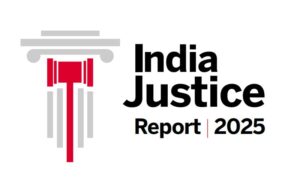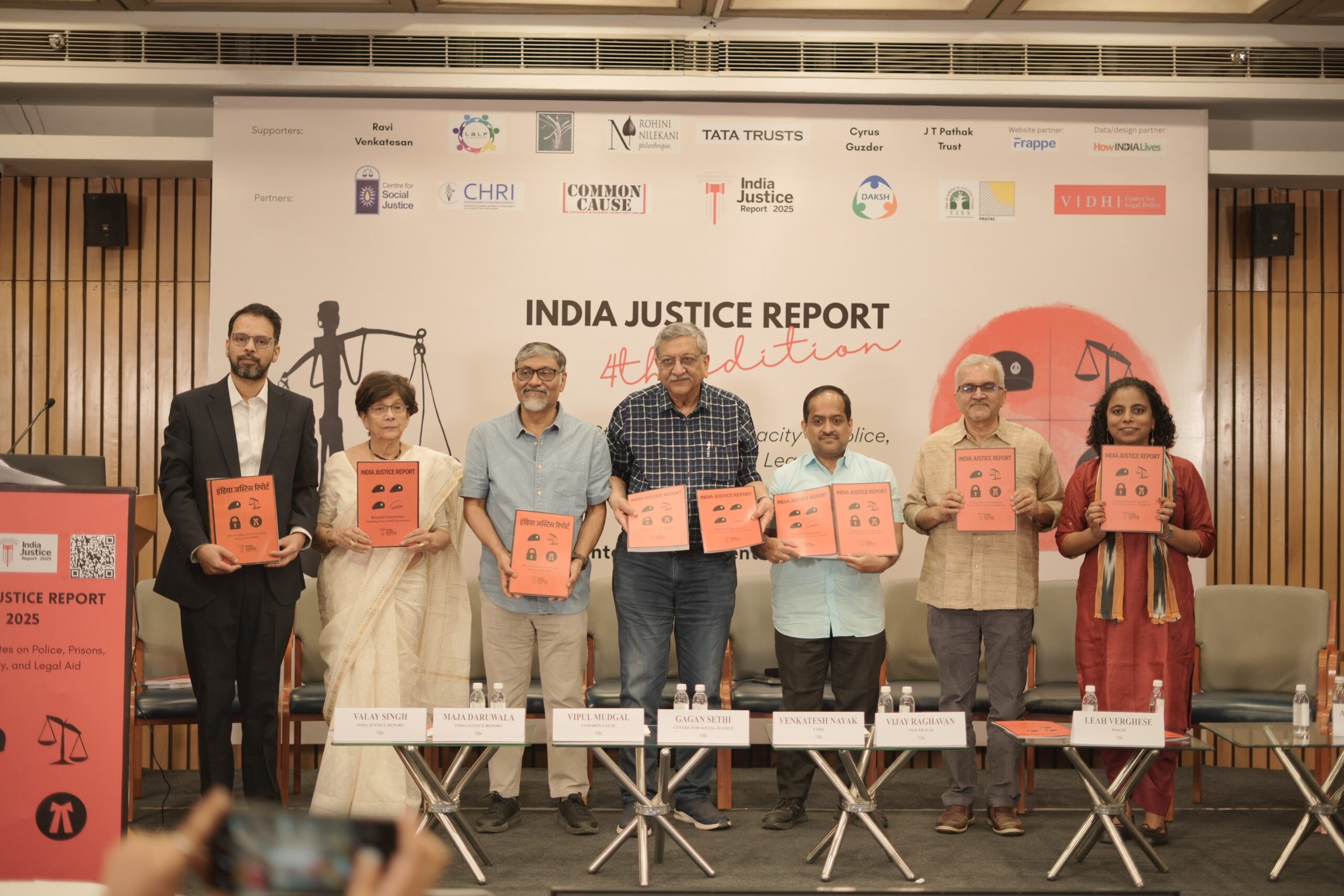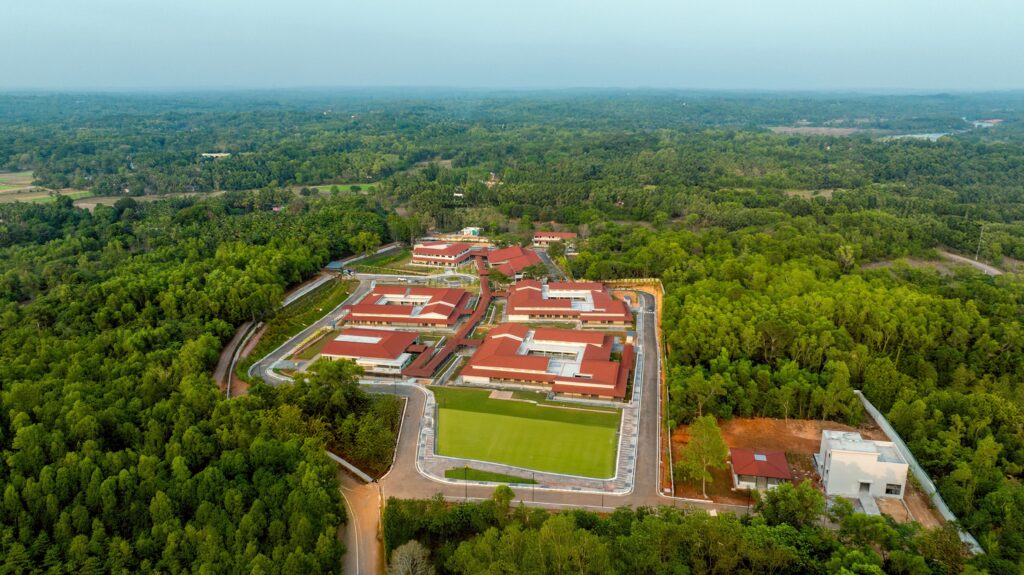Uttar Pradesh has the most overcrowded prisons, More than half of the HC judges missing, reveals India Justice Report 2025

Some encouraging improvements:
- Vacancies among the constabulary halved in the last five years (2017-2023).
- A 32% growth in prison budget allocations and over 10% in budgets for police
- State contributes over 90% of its total legal aid budget

Persistent lacunae:
Uttar Pradesh’s ranking remains in the bottom three among the large and mid-sized states, despite climbing one place in 2025. This year’s ranking highlights persistent gaps in capacity in the state.
- Uttar Pradesh records a 51% vacancy among High Court judges – the highest in the country and 1 in every four district court judges were missing in 2025.
- Only 12% representation of Scheduled Tribes – the lowest in the country.
- One legal service clinic served 815 villages
15 April, Lucknow: The 2025 India Justice Report (IJR), India’s only ranking of states on delivery of justice in the country, released today, ranks Uttar Pradesh 18th in Legal Aid and 17th in Judiciary, while overall it was ranked 17th (2022: 18th) among the 18 Large and Mid-sized states (with population of over one crore each).
The top overall position was retained by Karnataka, followed by Andhra Pradesh, climbing from fifth in 2022 to second, Telangana (2022 ranking: 3rd), and Kerala (2022 ranking: 6th). Among the seven small states (with populations less than one crore each), Sikkim (2022: 1st) ranked first, followed by Himachal Pradesh (2022: 6th) and Arunachal Pradesh (2022: 2nd).
The India Justice Report (IJR) was first initiated by Tata Trusts, with the first ever ranking published in 2019. This is the fourth edition of the report, in collaboration with partners including the Centre for Social Justice, Common Cause, Commonwealth Human Rights Initiative, DAKSH, TISS–Prayas, Vidhi Centre for Legal Policy, and How India Lives, IJR’s data partner.
Through a rigorous 24-month quantitative research, the IJR 2025, similar to the previous three, has tracked the performance of states in capacitating their Justice delivery structures to effectively deliver mandated services. Based on the latest official statistics from authoritative government sources, it brings together otherwise siloed data on the four pillars of Justice delivery – Police, Judiciary, Prisons, and Legal Aid. Each pillar was analysed through the prism of budgets, human resources, workload, diversity, infrastructure, and trends (intention to improve over a five-year period), against the state’s own declared standards and benchmarks. This edition also separately assesses the capacity of the 25 State Human Rights Commissions (see SHRC brief for more) and consists of essays on mediation and access to justice for persons with disabilities.
Discussing the India Justice Report, Justice (Retd.) Madan B. Lokur commented, “The punishing process of accessing justice begins with the very first encounter an individual has with the system. With our failure to properly equip and train frontline justice providers—police stations, legal aid actors including paralegal volunteers and district courts—we fracture public trust. These institutions are intended to embody our commitment to equal justice. The strength of our entire justice framework rests on these critical first points of contact. The fourth edition of the India Justice Report points out that improvements remain few and far between in the absence of adequate attention given to resources. Alas, the burden continues to remain on the individual seeking justice, and not the state to provide it.”
Ms. Maja Daruwala, Chief Editor, India Justice Report, highlighted, “As India moves forward into a hundred years of being a democratic, rule of law nation, the promise of rule of law and equal rights will remain hollow unless underwritten by a reformed justice system. Reform is not optional. It is urgent. A well-resourced responsive justice system is a constitutional imperative that must be experienced as an everyday reality available to every citizen.”
Uttar Pradesh Ranks: Pillar Wise
| IJR 4 | IJR 3 | |
| OVERALL | 17 | 18 |
| POLICE | 17 | 15 |
| PRISONS | 16 | 17 |
| JUDICIARY | 17 | 15 |
| LEGAL AID | 17 | 18 |
High share of cases pending for over 3 years
As of 1st January 2025, the Allahabad High Court had the highest share of pending cases in the country – 11 lakhs. Of these, the court recorded 71% pending for over three years, recording the highest share in this category. This coupled with more than half judges missing on the bench and a consequent low case clearance rate of 78% – also among the lowest in the country. At the district courts, the state records 53% of its 1.2 crore pending cases, pending for more than 3 years.
In police, vacancies reduced significantly in the police between Jan 2017 and Jan 2023, going from 53% to 28% among constabulary and 63% to 42% among the officers. In the Forensic department, more than 1 in every two scientific staff is missing in the forensic labs and there is a 19% shortfall of administrative staff.
Between 2010 and Jan 2023, the state has been unable to meet caste quotas in the police. SC officer vacancies have remained over 60% between this period as they have remained among ST officers, touching 88% – the highest among states – in 2023. Among OBCs, the state has shown some improvement, reducing vacancies from 59% in 2010 to 23% in Jan 2023.
Prisons
Uttar Pradesh’s prisons are over 80% their capacity and run with a very high overall staff[1] shortfall of 28%. Within the prison staff, vacancies stand the highest among medical staff (54%) and recorded no sanctioned correctional staff. More than 1 in every three prisons recorded an occupancy rate over 250%. There were more than a 1000 prisoners per medical officer.
In legal aid, despite the state contributing 93% of its total legal aid budget, it could utilise only 60% of it. Utilisation of NALSA Fund also fell to 19% in 2022-23. There were just 120 legal service clinics for its 97,000 villages, averaging to one clinic serving 815 villages.
The IJR 2025 has reiterated both immediate and foundational corrections. It has flagged urgent filling of vacancies and increased representation. To effect irreversible change, it has exhorted that Justice delivery be designated as an essential service.
———







